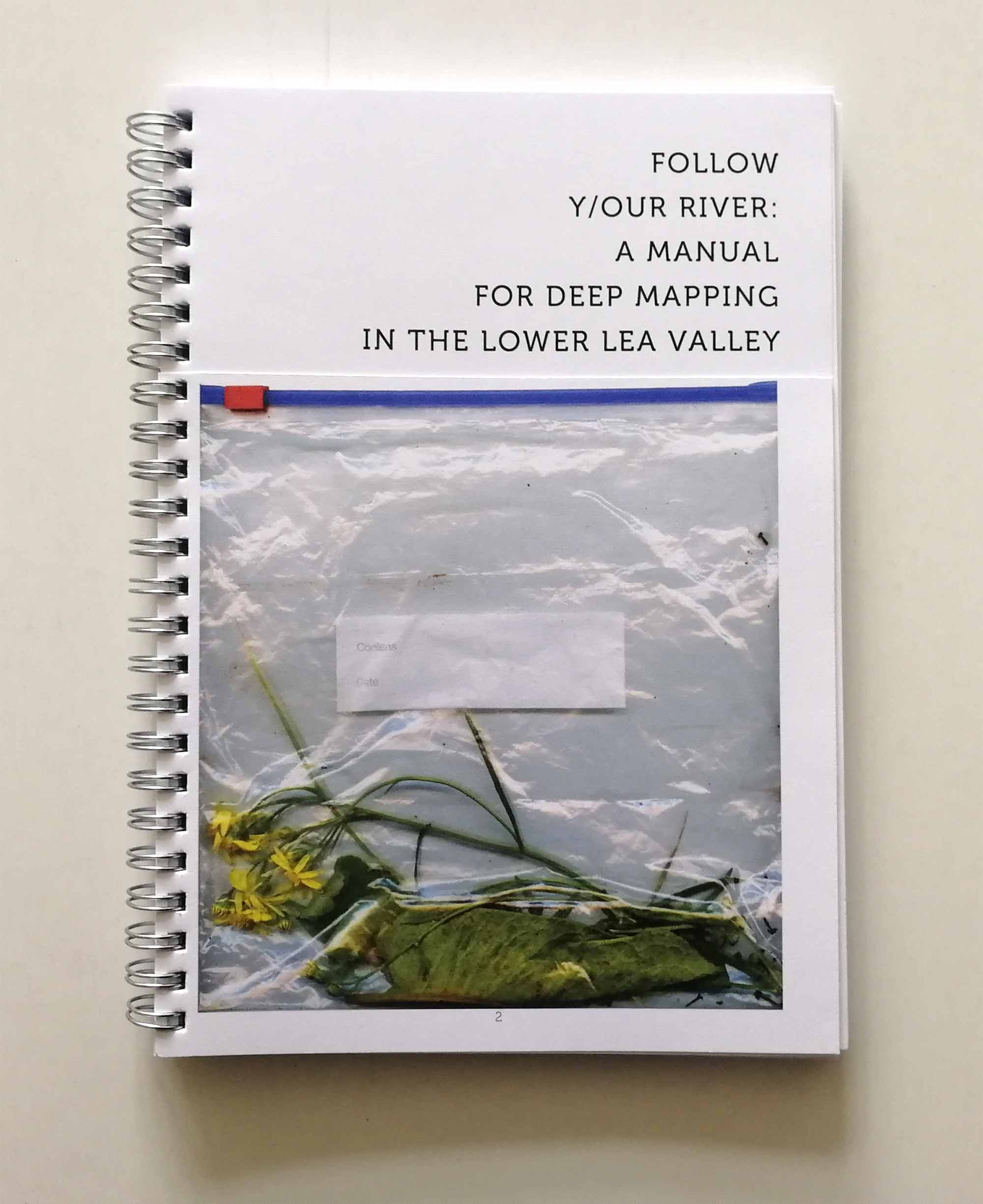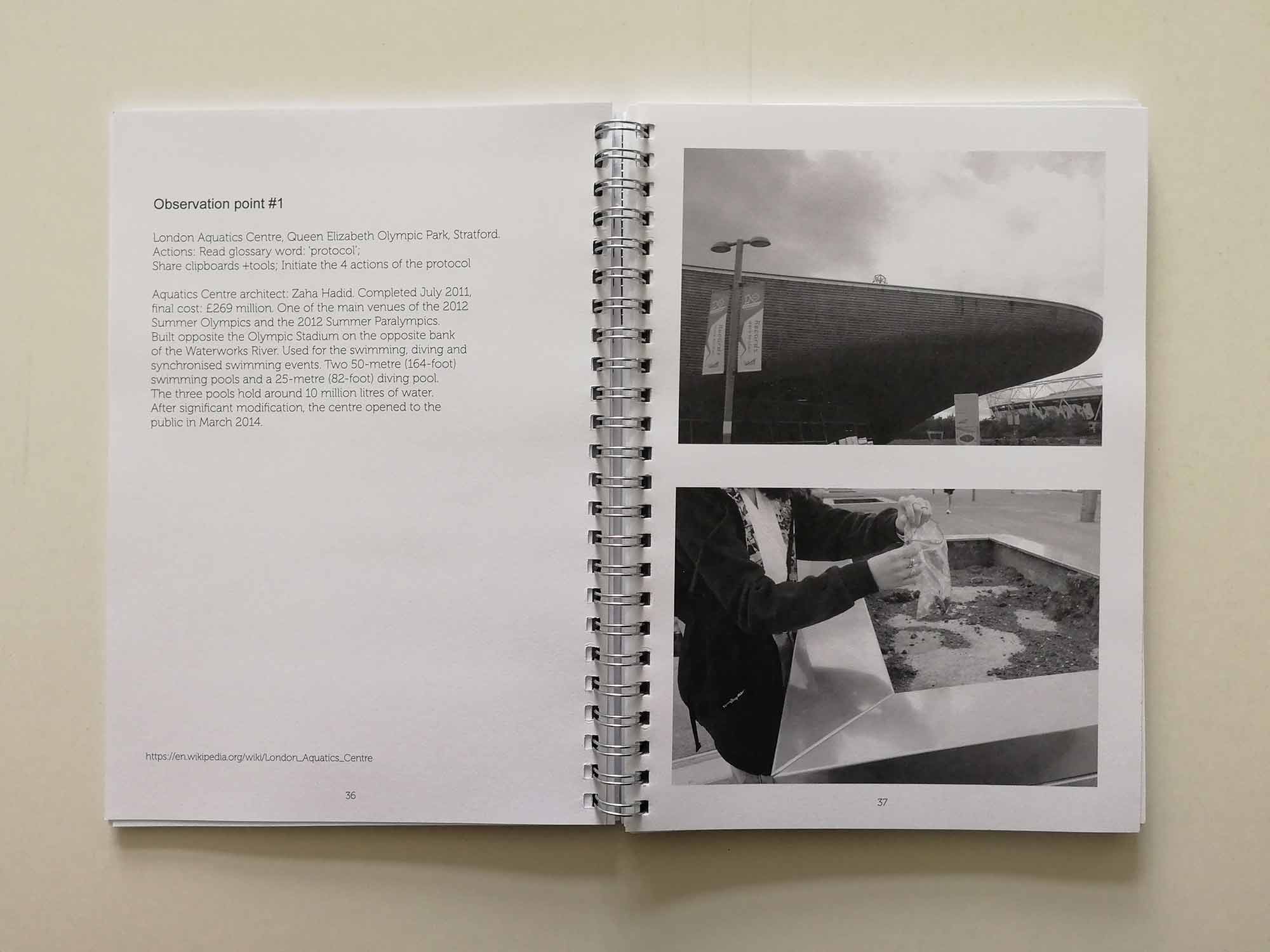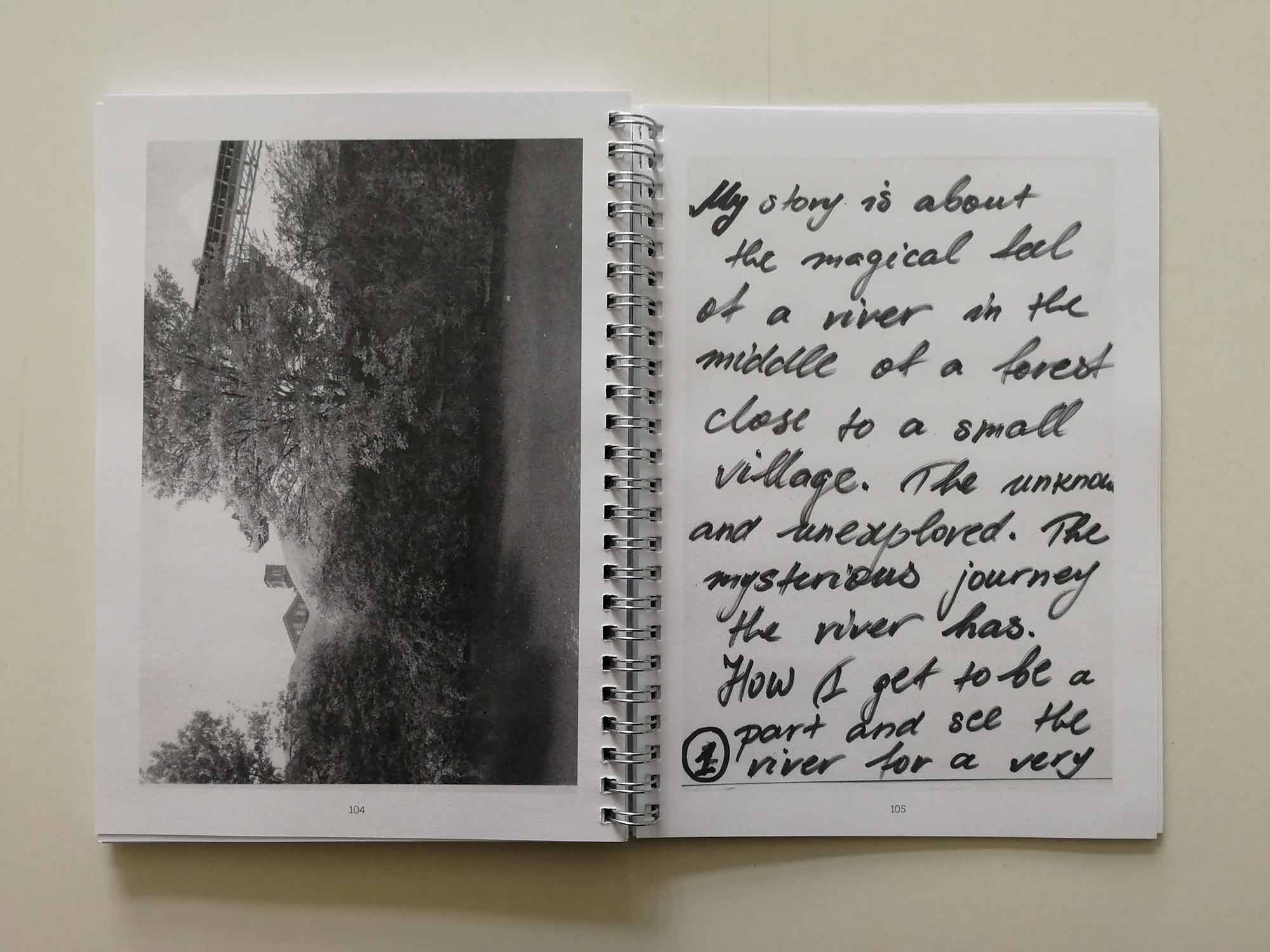
"Follow Y/Our River: A Manual for Deep Mapping
in the Lower Lea Valley," crafted by paula roush
and tamara stoll, serves as a guide to their place-based teaching approach, utilizing the Lower Lea Valley as a live classroom.
This manual outlines a methodology for exploring watery landscapes, emphasizing deep mapping techniques that intertwine photography,
ecological studies, and experiential learning.
By inviting students to engage deeply with the
river Lea and its surroundings, the project fosters
a profound connection between personal
memories, water, and landscape. It not only documents their journey of discovery but also equips others with the tools to explore their own relationships with watery places, making it an invaluable resource for educators and students alike.
TITLE: Follow y/our river: a manual for deep
mapping in the Lower Lea Valley
AUTHORS: paula roush and tamara stoll
with Y2 Photography at School of Arts &
Creative Industries at London South Bank
University
Editorial design: paula roush + tamara stoll
Photography and artwork: Abbie Collom,
Alex Gafney, Amy Morgan, Desislava Doneva, Elizabeth Hogan, Eloise Gallimore, Isaac Firby, Jennifer Civera, Jo Webb, Massi Montford,
Megan Wilkinson, Neo Hookey, Sohail Ehsan,
Stéfan Weil, Tilly Edgley, paula roush and
tamara stoll
FORMAT: instructional manual
PAGES: 124
DIMENSIONS: 14.8 x 21 cm
PAPER: uncoated matt recycled paper 100gsm
BINDING: wiro bound booklet
PROCESS: Indigo
COLOUR: black & white (book block), colour
(cover)
EDITION: open
PUBLICATION LICENSE: Creative Commons
(CC BY-NC-SA 4.0)
PRODUCTION ASSISTANCE: IC Visual Lab
and Swap studio
ACKNOWLEDGEMENTS: Simon Myers and
Basia Rabczuk (Cody Dock)
YEAR: 2023
ISBN: 978-1-7390996-5-7
PUBLISHER:
msdm publications + road less travelled press
£19.99
online store
“Follow y/our river” is a research project that explores the relationship between people and watery landscapes. In the autumn of 2022, four years after we first met at the river Lea Bow Locks, which is where the msdm publications studio was situated, Tamara and I (paula) undertook a self-initiated artist residency along the Lea Valley. During this period, we engaged in dialogue with various manifestations of the river Lea, which presented an opportunity for us to explore new research and form connections along the fluid geography of the Lea Valley. Its timeline spans from ancient water sources and industrial waterways to contemporary urban hydro-spectacles, reflecting humanity’s changing relationship with water over time, from a deity to a resource, from common use to private commodity.
On the wall of the msdm studio is an index card with a quote from Joseph Campbell that states, ‘Follow your bliss.’ This quote is the inspiration for the title ‘follow y/our river.’ It reminds us of the importance of pursuing what we are passionate about and being purposeful to our community. Campbell’s ideas are relevant to anyone on the path of transformation and self-development, and this project invited our students to consider the life-shifting implications of following their bliss. By connecting to one’s river, we can recognise that it has been waiting for us all along, and this is the river of our bliss.
As part of our photography group’s teaching, Tamara and I partnered with the river Lea and the lower Lea Valley as our classroom site for a transdisciplinary approach to landscape photography and to invite our students to discover our river or their own river.
Our aim was to focus on the liminal edges of the river as spaces where urban and rural, human and non-human mix in a productive state of entanglement. To conduct fieldwork along the river using various approaches, such as photographic, geographical, ecological, and experiential methods, to develop a narrative about the Lea Valley.
On the first day, we began the project with a guided exercise to connect the group with memories of their bodies of water, be it a river, a pond, or a beach from their childhood or current everyday life. On the second day, on Friday the 7th of October, the photography group walked together along the lower Lea Valley. Each group member practiced deep mapping, collecting and recording what they encountered along the ten observation points, each focusing on particular aspects of the landscape. We worked together with the goal of learning deep mapping methods of research, by producing an abundant number of photographs and applying one or more protocols. Deep mapping artifacts typically include maps, socio-historical, legal and political documents, literary accounts, stories, press records and photographic archives.
Protocols can be: itinerary-based (following and investigating a pre-arranged itinerary), material-based (incorporating materials collected on site and related observations), typological (images organized in groups and series), and oral histories (interviews and stories of the people in the photographs/site).
Along the itinerary, we also examined how these environments have been captured in photographic narratives, specific ways watery places, edges, and liminal zones have been photographed, recorded, and narrated. We brought with us our collection of publications related to the river Lea and the Lea Valley, works by other artists, photographers, and urbanists that serve as inspiration for the creation of new photoworks. Emphasis is placed on the dialogue between human and non-human, watery places, and memories: place memory, private memory, or public memory.
For their personal projects, each student engaged in a dialogue with their respective watery places, delving deep into their personal memories and experiences with water, to create visual stories that reflect our evolving relationship with the landscape.
We see the river as a metaphor for our own journey in life, and by following our river, we can discover and explore new possibilities and connections. Through “Follow y/our river,” we aim to inspire others to connect with their own watery landscapes and explore their relationship with water.



